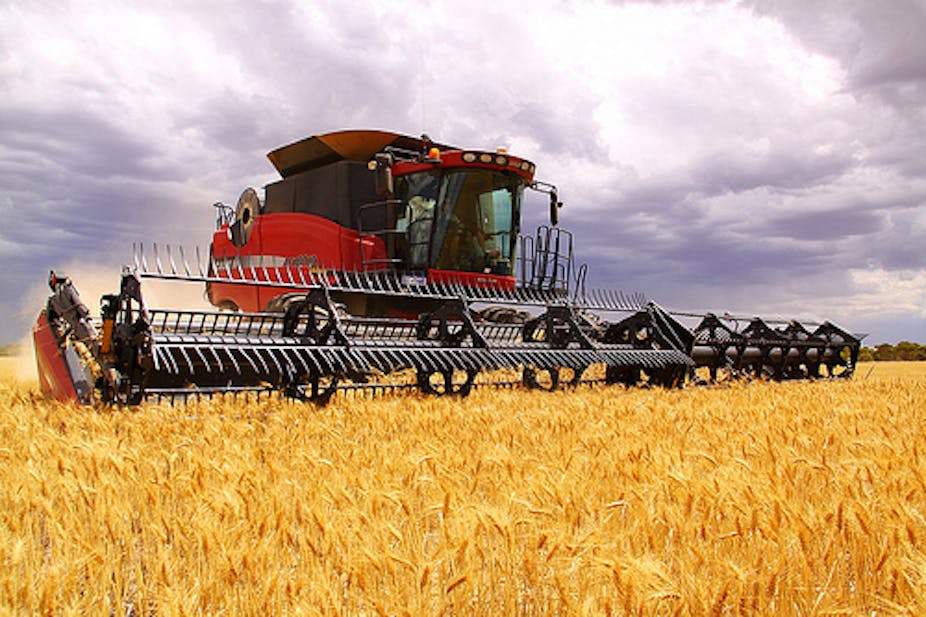Last week saw national and international media attention on events unfolding in Parliament House. But another function in that magnificent building was arguably of much greater long-term importance — the Crawford Fund’s annual Parliamentary Conference, focused on global food security.
A stellar panel of international experts surveyed the key challenge of how best to feed an extra two or three billion people over coming decades.
We heard from Jonathan Foley that the world probably has enough land, nutrients and water in aggregate. But major distributional and degradation problems need to be fixed if widespread famine and inequity is to be averted.
Recent food price spikes seem likely to recur. Expert consensus is that the era of declining real food prices is over. About 40% of global food is grown not for people, but for animals and for fuel, and of the food produced for humans, up to 40% is wasted. Changing consumption patterns (increasing meat consumption with rising wealth in developing countries) is probably a bigger driver of food insecurity than population growth.
There are real limits to agriculture expanding its footprint, and the “scramble for natural resources” is an apt title. Water, Nitrogen, Phosphorus and biodiversity loss are major concerns globally, albeit for different reasons.

As argued by Julian Cribb in the Coming Famine, we will have to innovate in a third agricultural revolution if we are to meet global food needs without a major expansion in agriculture’s footprint. Life sciences and ICT offer exciting technological components of new solutions according to Frank Rijsberman. But integrative tools will be equally important enablers.
Dr Rijsberman, recently of the Google and Gates Foundations and now CEO of the Consultative Group on International Agricultural Research (CGIAR), argued strongly that investment in agricultural R&D has been shown consistently around the world (as it has here) to provide great returns on public and private funds.
Christine Padoch, Jonathan Foley and Xuemei Bai reminded us that false dichotomies - urban vs rural; organic vs GM; food vs energy; forested vs cleared lands - are not helpful. With more than half the world’s population now living in cities, we need much more integrated approaches across whole landscapes and regions that seek to optimise for multiple objectives.


Implications for Australia’s National Food Plan
Having top international food security experts in Parliament House was timely because Australia is finalising its first National Food Plan.
There is clearly no risk of Australia running out of food, but neither can we aim to feed the world, or even many of our neighbours.
We too have major food distribution issues and significant diet-driven health problems with obesity and associated chronic illnesses and morbidity.
Our agriculture has always been more exposed than most to climate variability, and now to climate change, water scarcity and rising real prices for energy. We are at the sharp end in managing for climate variability and extreme weather events, and we have long faced more acute water stress than competing food exporting countries.
Don’t get trapped in silos
It’s not helpful for Australia to look at food, health, land, water and energy in silos. They are inextricably interconnected. While its high level objectives are sound, the National Food Plan Green Paper underplays the inter-dependencies between climate, food, health, water, energy and land.
We need sophisticated land use planning, and integration tools to help us work out how best to “fit” competing land and water uses at national, regional and landscape scales.
Australian agriculture should be a major producer of energy, integrated within farming systems at a paddock and farm scale, and within regional economies at a regional scale. The emphasis should be on renewables, including second-generation biofuels.

The urban dimension of food production is critical
Cities are great magnets, drawing in people, nutrients, water and energy from their rural hinterlands. They often use these resources inefficiently, generating significant waste streams. There is a major urban engineering job to re-plumb and re-wire our cities and peri-urban areas to catch waste water and nutrients before they become pollutants, and transform them back into food, water and energy.
Urban and peri-urban food production is a major opportunity to close waste loops. More importantly, it can help us to reconnect urban people with food production — in backyards, neighbourhoods and green belts. Landcare models are applicable here, energised by links with farmers’ markets and schools and facilitated by social media.
This would help in another key long-term objective: to attract talented young people into food producing industries.
If the National Food Plan fails to engage urban dwellers and the health system, a major opportunity to reposition Australian agriculture will have been lost.
Lead internationally, and nationally
Australia has much to gain from building on its international reputation for excellence in agricultural research, extension and policy, by being a proactive international player, helping other countries (especially our neighbours) to feed themselves. Strategically, we have much to gain by helping countries in the region to lift their own food production sustainably, exporting our know-how and services.
We can make a bigger difference to regional food security this way than we can by opening up new food bowls in northern Australia.
But only if we are prepared to reinvest in integrated food, water and energy research, development, extension and education here in Australia. The trend of declining investment must be turned around sharply.
I’ve argued previously that Australia needs purchasing mechanisms for research and development, education and extension that are broader, more integrated, expert and strategic than our current commodity-specific approach. The Productivity Commission inquiry into rural R&D illustrates how to get there.
The National Food Plan is a great opportunity for the federal government to lead in taking a more integrated approach across these big intersecting issues, play a strategic leadership role as a key investor in agricultural research in the region and beyond, and prepare the country for inevitable challenges ahead.

